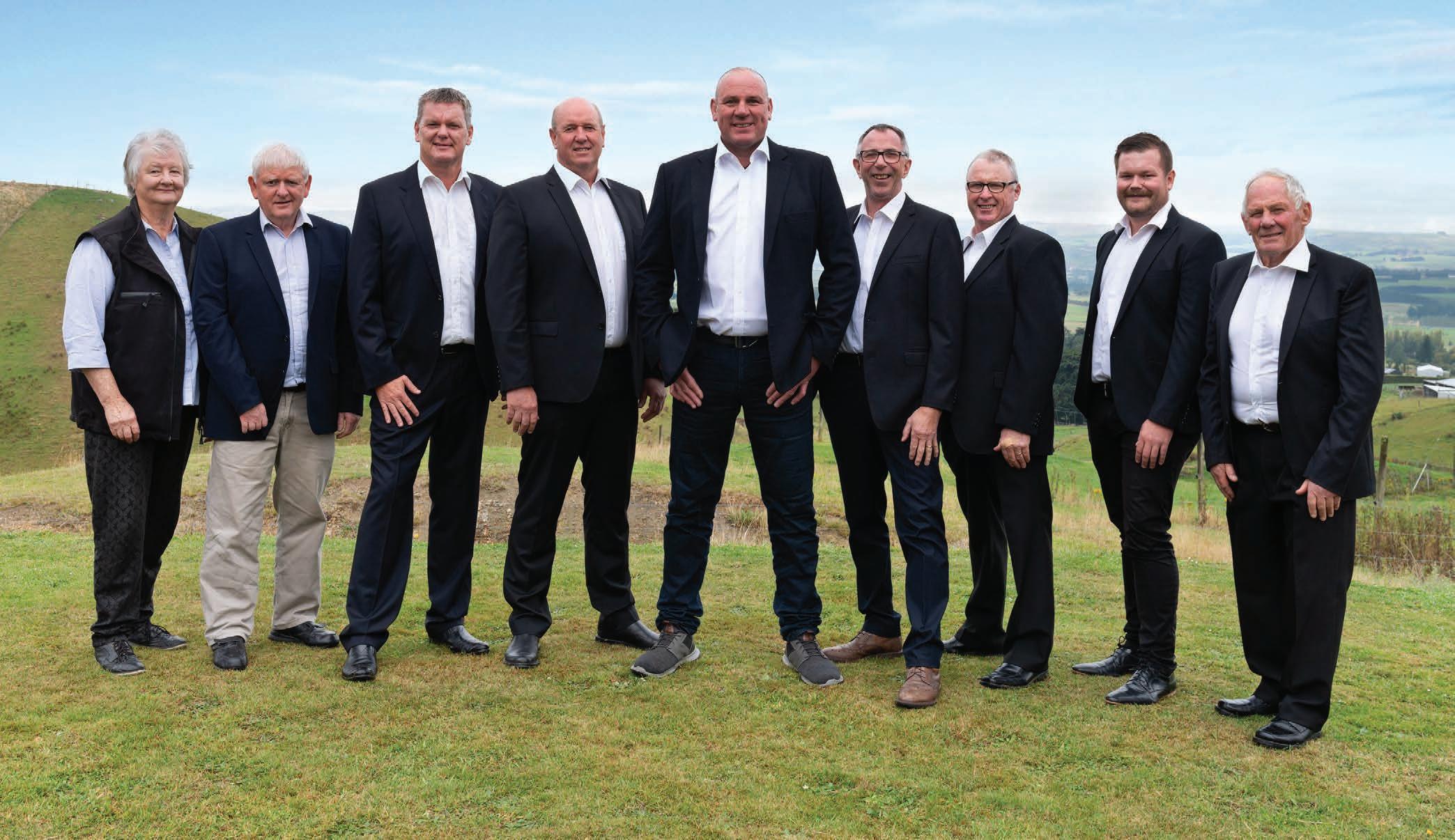
9 minute read
Opinion
FARMERS WEEKLY – farmersweekly.co.nz – April 19, 2021 25
Teamwork achieves better outcomes
Meaty Matters
Allan Barber
WHEN I started in the meat industry nearly 30 years ago, there was no such thing as collaboration, unless one counts the futile attempt by meat companies to restrain livestock prices to an affordable level. It didn’t take long for the Commerce Commission to rumble about illegal forms of collaboration, and soon after that the inevitable failure of Weddel confirmed the only solution to overpaying was a reduction of excess capacity.
In the 1990s, the Meat Industry Association’s focus was far less strategic and very much controlled by the large processors, while the Meat Board represented farmers entirely behind the farm gate, managed the EU and American quotas, ran the Economic Service and forked out farmer levies mainly for UK and EU lamb promotion, with no thanks from the exporters.
In hindsight the meat industry was largely dysfunctional, emerging slowly from the era of subsidies – processors and exporters disclosed as little as possible, either to each other or to farmers, most meat plants were old and inefficient with notable exceptions, product prices were inadequate and unpredictable, farmers saw little value in loyalty for which they were generally not rewarded and their representative bodies were unable to achieve much positive influence.
The 90s and early 2000s saw substantial improvements in plant efficiencies and major gains in product presentation, such as chilled lamb and beef, while farmers began to recover from the drastic fall in stock numbers after subsidies were removed and some better seasons made it possible to buy new equipment, including laptops and hand-held data entry devices, which enabled more efficient farming practices.
By the start of the last decade another major change was underway: the old leaders were taking retirement to be replaced by a new generation that had not grown up in the antagonistic environment, which had for so long dominated a major part of the industry. Shareholding and ownership changes played their part and new concepts such as collaboration in noncompetitive areas, cooperation between farmer and exporter representative bodies, mutual commitment to funding research and development, and more consistent profitability became the norm.
Most recently issues such as climate change, freshwater quality and conservation, and health and safety mean the pace of regulatory change has quickened, which has forced the industry to realise working collaboratively is the only feasible way to engage with the Government of the day, whether national or local. No individual processor or farmer organisation can hope to mount a compelling argument which the Government or regional council will accept, unless it is supported by research, consultation and facts.
Farmer and former MP Mark Patterson says it is essential for the rural sector to work as a team when talking to the Government because in the event of a gap, the Government will inevitably take the easiest option presented to it. He believes farmers may have a perception that their representatives are not pushing particular issues as hard as they should, but they may not realise the amount of work going on behind the scenes to achieve the best solution. Chris Allen, Federated Farmers’ board member responsible for water quality, biodiversity and local government, considers it essential to tread the fine line between arguing forcefully and explaining what will or will not work from a practical perspective, while acknowledging at the same time what the Government wants to achieve.
This collaborative approach recently proved successful in negotiations with government ministers and the Southland Regional Council about winter grazing rules. One of the farmer representatives Tony Cleland said they had to show the group was genuine about achieving a common goal, with young farmers in the region speaking eloquently about their desire to achieve improved environmental outcomes, as well as maintaining the viability of their own businesses. It was the collaboration between DairyNZ and Beef + Lamb NZ that succeeded in getting ministers David Parker and Damien O’Connor to come to Southland and kick the wider process off. The ministers later expressed their pleasure at being able to talk to concerned farmers, instead of being talked at.
B+LNZ chair Andrew Morrison is clear about the need to pitch workable policies to the Government without falling into the trap of telling ministers what they should do, as Labour has such a large majority it can effectively do what it wants. He cites the climate change agreement He Waka Eke Noa as another prime example of all parties joining together and having a mature and ultimately successful conversation with the Government. On the other hand, if the Government had worked with the agricultural sector more collaboratively and earlier on essential freshwater, a positive outcome on winter grazing could have been achieved six months sooner. B+LNZ is continuing to work with the Government to fix the low-slope map for stock exclusion, which also has huge implications for sheep and beef farmers.
Illustrating how far the red meat sector has come in collaborating for the common good are the joint meetings that MIA and B+LNZ have been having with ministers, MPs and officials over the last couple of years to present a united farmer and processing company position. This has been particularly on issues like trade, climate change, carbon farming and essential freshwater. Silver Fern Farms communications manager Justin Courtney highlights the important contribution individual meat companies can make by collaborating with B+LNZ and MIA to simplify documentation for farmers, while continuing to search for value-added market developments.
The amount of hard work in these areas provides clear evidence of the sector’s commitment to constructive communication and collaboration to make progress on behalf of its farmers, employees and New Zealand as a whole. This indicates today’s use of softer means of negotiation and communication is more likely to gain the desired outcome than yesterday’s more combative methods.
VITAL: Farmer and former MP Mark Patterson says it is essential for the rural sector to work as a team when talking to the Government.
Your View
Allan Barber is a meat industry commentator: allan@barberstrategic. co.nz, http://allanbarber.wordpress. com
Spotlight on dwindling labour market
Straight Talking
Cameron Bagrie
WHERE are the workers? It is constraining growth.
Border restrictions are having an obvious impact, but the Reserve Bank of New Zealand (RBNZ) assesses the economy as being close to maximum sustainable employment (MSE).
MSE is not everyone in a job.
MSE, or full employment, is the lowest level of unemployment an economy can deal with before it starts causing overheating problems, with labour shortages curbing growth and wage growth pushing inflation too high and necessitating higher interest rates.
We have the 11th lowest unemployment rate (4.9%) in the OECD and the fifth highest employment rate, the ratio of employed to the working age population.
Firms are reporting difficulty hiring both skilled and unskilled workers. Labour gaps are being filled temporarily by existing staff working more hours than usual. Farming jobs available on Seek are 40% higher than they were in 2019.
Yet, we still have an array of statistics pointing to an available pool of labour.
The number of people on the jobseeker benefit is falling but there are still more than 200,000 on it – 6.5% of the working age population, or one person in 15. As at the end of March, there were 370,000 on all the main benefits – jobseeker, supported living payment and sole parent support, for example – that’s 11.5% of the working age population, or one person in nine.
Youth, aged 15-19, unemployment is 20.5%; Māori unemployment is 9%, and Pasifika 9.6%.
Unemployment is 4.9%, but lots of people are underemployed and want to work more hours. The underutilisation rate – a broader measure of untapped capacity in the labour market – is 11.9%.
Some territorial authorities such as the Queenstown-Lake district, Central Otago and the Mackenzie district have benefit numbers at about 2% of the population. Others – Far North, Gisborne, Horowhenua, Kawerau, Ōpōtiki, Rotorua, South Waikato, Waipa, Whakatāne, Whanganui – are double-digit.
Sixty-five percent of main benefit recipients have been receiving it for more than a year, which is a bit lower than what it has been since 2015 (about 70%), largely because a lot of people lost jobs in the past year. Almost 20% of those on jobseeker are not work-ready due to psychological or psychiatric conditions.
Those statistics signal major structural challenges that monetary policy – the RBNZ – can’t address.
RBNZ is starting to pour some sunlight on key labour market issues now, but also thinking about the future. They have the research grunt to do it. Their dual mandate (inflation and full employment) gives them scope to do the work.
The February Monetary Policy Statement drew attention to labour market conditions for Māori, including higher unemployment, lower labour force participation and lowincome levels.
It is not just about challenges today. The RBNZ noted: “Māori people will make up an increasing share of the future workforce as the large number of Māori currently aged under 15 begin to join the labour force in coming years.”
Do businesses realise the extent of those pending labour market changes?
As the population ages, worker shortages will intensify. Farming is facing the same challenges as other industries.
Improving structural impediments and a stronger focus on labour market policy is needed to help the economy grow faster by lifting the growth rate of MSE. Think of it as improving access to a pool of labour – both quantity and quality. That will not happen by tinkering. Border restrictions have exposed serious underinvestment in skills and training in New Zealand.
The right policies will support a higher level of overall employment without generating inflationary pressure. That means sustained lower interest rates and helps take pressure off the New Zealand dollar – of key interest to the rural sector. I am looking forward to the RBNZ releasing more work on the labour market as part of their mandate. ***
While Bagrie Economics uses all reasonable endeavours in producing reports to ensure the information is as accurate as practicable, Bagrie Economics shall not be liable for any loss or damage sustained by any person relying on such work whatever the cause of such loss or damage. The content does not constitute advice.





From Southern Wide to nation-wide










A match made in the provinces.
Property Brokers is proud to welcome Southern Wide into the family. The team has a proven track record of leading rural sales in Southland. Their addition further strengthens our national network ensuring that our customers have access to the largest database of buyers in New Zealand.
With over 850 staff in more than 80 locations, we are a family-owned nationwide network dedicated to providing our customers with a better real estate experience.







